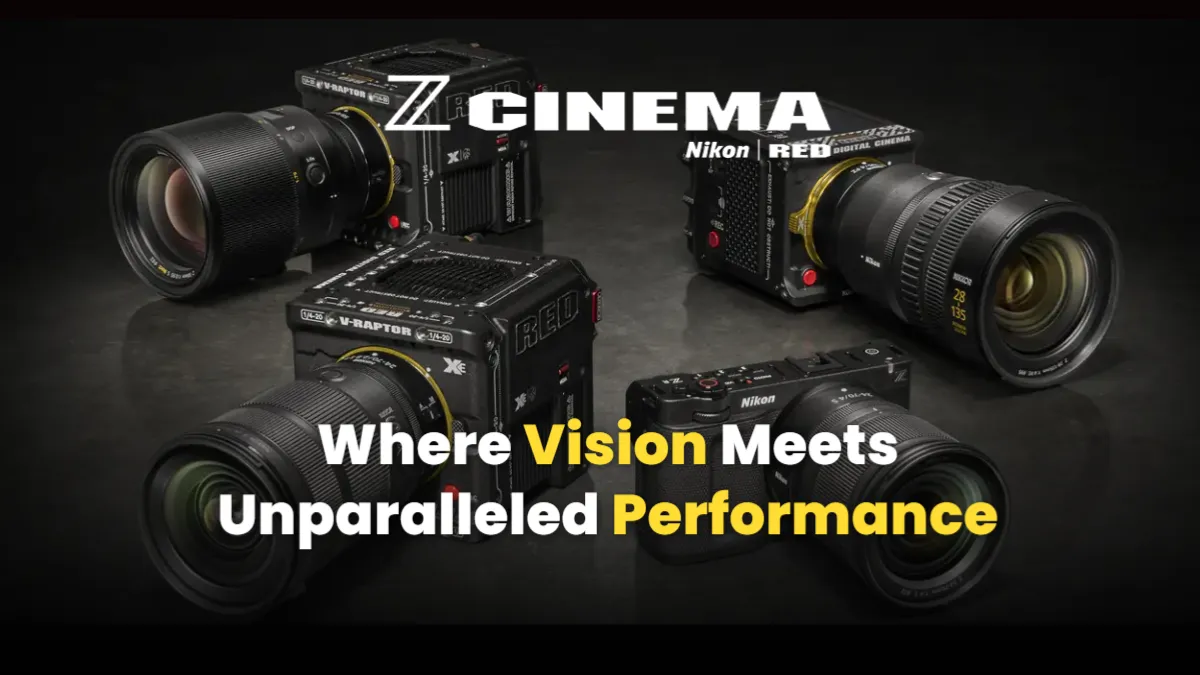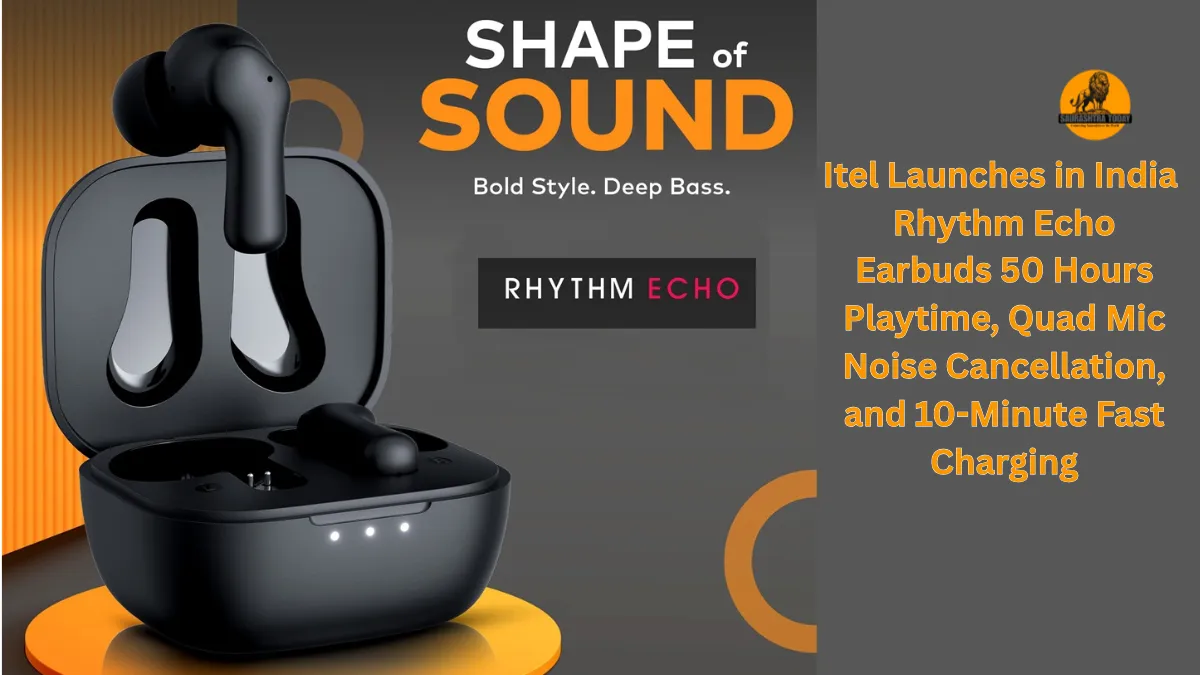NIKKOR Z Cinema Lenses: Nikon has once again caught the attention of filmmakers with its entry into the world of dedicated cinema equipment. The recent launch of the ZR camera marked the beginning of Nikon’s bold venture into cinema-specific gear. Compact yet powerful, the ZR brought a new workflow to the industry, including 6K RAW recording, dual base ISO capabilities, RED’s R3D NE codec support, and even 32-bit float audio recording. While the ZR itself was impressive, it is only the tip of the iceberg. Nikon has officially confirmed that a full lineup of dedicated NIKKOR Z Cinema Lenses is in development, hinting at a major shift in the company’s cinema ambitions.
In this article, we explore what Nikon’s cinema lens lineup might include, why these lenses matter, and how they could impact filmmakers across the world.
Nikon’s Official Direction for Cinema
The ZR camera was designed with filmmakers in mind. Weighing just over 600 grams, it delivers internal 6K RAW capture, integrates Nokia’s OZO audio system, and offers features that clearly target professional content creators. Alongside the ZR, Nikon has teased NIKKOR Z Cinema Lenses, which promise professional-grade features such as geared focus rings, T-stop markings, and a consistent build quality tailored for cinematic use. Early images of these lenses indicate 0.8 MOD gears, a hallmark of true cinema mechanics, which makes focus pulling and lens control precise and predictable for filmmakers.
This direction signals Nikon’s commitment to serious cinema work rather than a casual entry into video production. By building lenses specifically for cinema, Nikon is aligning its tools with the demands of narrative filmmaking, documentary work, and commercial production.
Why Cinema Lenses Are Crucial for the ZR
Currently, the closest lens available for filmmakers using the ZR is the Nikkor Z 28–135mm f/4 PZ, a hybrid power-zoom lens. While versatile for documentary or event work, it lacks features that true cinema productions require. Features like consistent T-stops, geared focus rings, and motion-picture-grade optics are essential for professional crews, especially those working in rental houses or high-end production environments.
To truly compete, Nikon needs to release a full range of primes and zooms that complement the ZR’s 6K RAW capabilities. The company’s moves suggest that the Z Cinema initiative is part of a broader strategy to reclaim a foothold in the professional cinema and video-production market.
Several industry insights, such as those published by YMCinema, indicate that Nikon has been quietly studying the competition, learning from the workflows of ARRI, RED, Canon, and Sony, and preparing to deliver cinema lenses that can meet these high standards.
Historical Context: Nikon’s Cine Heritage
Nikon isn’t new to cinema optics. From the 1960s through the 1980s, Nikon produced Cine-Nikkor lenses, compact optics designed for 8mm and 16mm film cameras. These lenses were commonly used on Bolex and other small-format systems and were appreciated for their sharpness, reliability, and compact design.
Eventually, Nikon shifted its focus entirely to still photography, leaving cinema-specific optics behind. The renewed interest in Cine-Nikkor lenses, noted in articles like Cine Nikkor Lenses Revived, highlights Nikon’s rich cinema lineage. The upcoming NIKKOR Z Cinema Lenses are less about starting from scratch and more about reconnecting with a dormant but authentic motion-picture tradition.
This historical perspective also shows that Nikon has been carefully planning its return, analyzing market gaps, and preparing lenses that meet modern filmmaking standards without compromising optical quality.
Industry Response and Momentum
The ZR camera has already demonstrated strong market potential. It quickly climbed Amazon’s sales rankings, showing that filmmakers are eager for cinema-ready Nikon products. Comparisons with cameras like the Canon C50 and Sony FX3/FX2 highlight the ZR’s fast sensor readout and RED codec integration, emphasizing Nikon’s competitive edge in workflow speed.
Additionally, Nikon’s collaboration with RED indicates a serious approach to cinema workflows. By integrating RED’s codec into the ZR, Nikon ensures that its cameras and future NIKKOR Z Cinema Lenses are compatible with high-end post-production pipelines, positioning them as a legitimate choice for professional studios and independent filmmakers alike.
A Speculative Look at Nikon’s Cinema Lens Lineup
Based on Nikon’s past patents, R&D, and current industry expectations, the potential NIKKOR Z Cinema Lenses lineup could include a combination of primes and zooms, designed to cover the most commonly used focal lengths in narrative, documentary, and commercial filmmaking. A realistic roadmap might look like this:
- 24mm T1.9 (Wide Prime) – 850–950 g, $1,999–2,499. Complements the 28–135mm PZ, ideal for wide coverage.
- 35mm T1.9 (Standard Prime) – 900–1,000 g, $2,199–2,699. A core focal length for documentary and narrative work.
- 50mm T1.5 (Fast Normal Prime) – 1.0–1.2 kg, $2,499–2,999. A flagship lens for cinematic depth of field and low-light performance.
- 85mm T1.5 (Portrait Prime) – 1.1–1.3 kg, $2,799–3,299. Perfect for interviews, portrait shots, and shallow-focus looks.
- 135mm T2.2 (Tele Prime) – 1.2–1.5 kg, $2,999–3,499. Ideal for narrative and fashion applications, offering long reach.
- 20–55mm T2.9 (Wide Cine Zoom) – 1.7–2.1 kg, $3,999–5,499. Compact zoom for handheld and gimbal shooting.
- 50–125mm T2.9 (Mid Cine Zoom) – 1.9–2.3 kg, $4,999–6,499. Covers mid-range to short telephoto needs.
- 28–135mm T4 PZ (Hybrid Bridge Zoom) – 1.2 kg, $1,299–1,599. A possible cine-style version of the existing power-zoom lens.
Expected Rollout Timeline
Industry analysts suggest the following rollout sequence for NIKKOR Z Cinema Lenses:
- Next 6–9 months: First prime lenses, likely 35mm and 85mm, alongside an early cine zoom teaser.
- 9–18 months: Additional primes including 24mm and 50mm, plus one of the cine zooms.
- 18–24 months: Long telephoto 135mm prime and the second cine zoom.
Pricing and Kit Options
For filmmakers and studios planning to invest in Nikon’s cinema ecosystem, potential kits could be structured as follows:
- Two-Prime Starter Kit – 35mm + 85mm, priced around $5,000–6,000. Ideal for solo shooters and indie productions.
- Three-Prime Core Kit – 35mm + 50mm + 85mm, $7,000–8,500. Suited for documentary and commercial crews.
- Full Prime Kit – 24mm + 35mm + 50mm + 85mm + 135mm, $12,000–15,000. Perfect for narrative filmmakers and rental houses.
- Two-Zoom Cine Kit – 20–55mm + 50–125mm, $9,000–12,000. Optimized for documentaries and corporate productions.
- Bridge Hybrid Kit – 28–135mm PZ, approximately $1,500. Entry-level run-and-gun solution.
Why Filmmakers Should Care
The introduction of NIKKOR Z Cinema Lenses represents more than just new gear; it signifies Nikon’s re-entry into a space dominated by Canon, Sony, and RED. The combination of the ZR camera with dedicated cinema lenses means that filmmakers will have access to:
- True cine-optics designed for motion picture use.
- Geared focus rings and consistent T-stops for reliable exposure and control.
- Seamless integration into professional workflows without compromise.
- A system capable of handling high-end production demands, including RAW capture and advanced audio integration.
For independent filmmakers, rental houses, and commercial production companies, this could provide an alternative to traditional cinema systems, offering a balance between affordability, portability, and professional-grade results.
Nikon’s Strategic Position
By leveraging its historical cine lens heritage, Nikon is not merely chasing trends but reclaiming territory in the cinema world. The ZR camera, paired with NIKKOR Z Cinema Lenses, is part of a broader strategy to offer a comprehensive filmmaking ecosystem. This move could position Nikon as a credible choice for professionals who require consistency, durability, and optical excellence.
The company’s careful research and planning show that Nikon is serious about cinema. From collaboration with RED to analyzing market gaps and introducing a logical lens roadmap, Nikon is aiming for a well-thought-out return to motion-picture optics. Filmmakers can expect lenses that not only perform optically but also integrate smoothly into existing professional workflows.
Also read: Tesla Phone 2025? Fact-Checks, Starlink’s Big Spectrum Move, and Why There’s Still No “Model Pi”
Conclusion
The ZR camera has already demonstrated that Nikon can compete in the high-performance cinema space. With NIKKOR Z Cinema Lenses on the horizon, Nikon is poised to provide filmmakers with a complete, professional-grade ecosystem. Whether you are shooting documentaries, narrative films, or corporate projects, the new cine lens lineup promises to deliver precision, reliability, and cinematic quality.
While the exact timing and pricing are still under observation, Nikon’s approach suggests that it could finally carve out a significant presence alongside established players like Canon, Sony, and RED. For filmmakers eager to explore new cinematic tools, the combination of the ZR camera and NIKKOR Z Cinema Lenses represents an exciting opportunity to elevate their craft to the next level.


















